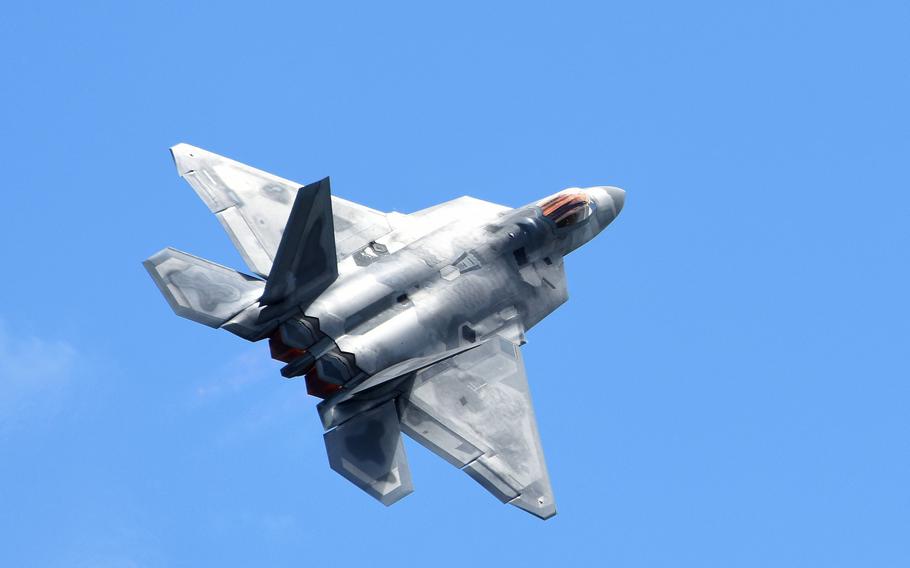
An F-22 Raptor was used to shoot down a high-altitude object over Canada on Feb. 11, 2023. (Jacob Thompson/U.S. Air Force)
Even small objects can cause massive damage to fast-moving airplanes, aviation experts say, underscoring the inherent risks to pilots and passengers of collisions in the nation’s airspace after three flying objects were shot down over North America since Friday.
It’s a matter of basic physics, experts said: a small mass colliding with a fast-moving plane can create significant destructive energy — and such an encounter could easily lead to disaster, they said.
Federal officials said the object shot down by the U.S. military Sunday over Lake Huron had been traveling at about 20,000 feet. That altitude is commonly used by short-haul commuter and business jets. The object downed Friday over Alaska had been moving at roughly 40,000 feet, where large passenger planes often fly.
“If any of these objects were to get in the way and collide with these aircraft, it would be catastrophic,” said Jeff Guzzetti, a former accident investigator with the Federal Aviation Administration and the National Transportation Safety Board. “You’re talking about flying through the air at hundreds of miles per hour ... It doesn’t take much at those velocities to impart significant structural damage to an airplane.”
Guzzetti pointed to the case of a business jet that crashed near Oklahoma City in 2008, killing the five people on board, after hitting one or more American white pelicans. The birds weigh up to 20 pounds, according to the NTSB, and the collision damaged the wing structure of the Cessna 500. In a collision with a high-speed commercial aircraft, any object that weighs more than about 20 pounds can cause terrible damage, including tearing though an aircraft’s hull, its main structure, he said.
The guiding principle of the U.S. air traffic control system, which helps usher pilots through the world’s busiest airspace, is that there should be clear information about what is flying where to help aircraft of all types and sizes avoid each other.
“Separation” is the aviation safety watchword, and having objects floating willy-nilly through the nation’s highly orchestrated airspace violates basic safety tenets, experts said.
“If they’re not announced, they’re floating obstacles that have the potential to bring down aircraft,” Guzzetti said. “That is just an unacceptable risk.”
Hassan Shahidi, president and chief executive of the nonprofit Flight Safety Foundation, said the risks to large commercial airliners are present at a wide range of altitudes, since they are routinely guided above and below their general cruising levels at the direction of air traffic controllers.
When those controllers clear a pilot to fly anywhere in the nation’s airspace, both parties expect that airspace will be clear, Shahidi said. Any time there’s an object or aircraft outside the normal air surveillance and identification process, “it poses a great danger when it’s floating out there,” Shahidi said.
Defense Department officials said the object downed over Alaska on Friday was “about the size of a small car” and did not resemble “in any way” the Chinese surveillance balloon shot down Feb. 4 off the coast of South Carolina. On Monday, officials said the three objects shot down since Friday, including one over Canada, were smaller and less sophisticated than the surveillance balloon.
“If they’re the size of a small car, that’s not small. That’s very large when we’re talking about commercial airliners,” Shahidi said. “It will basically blow it up. It’s that serious.”